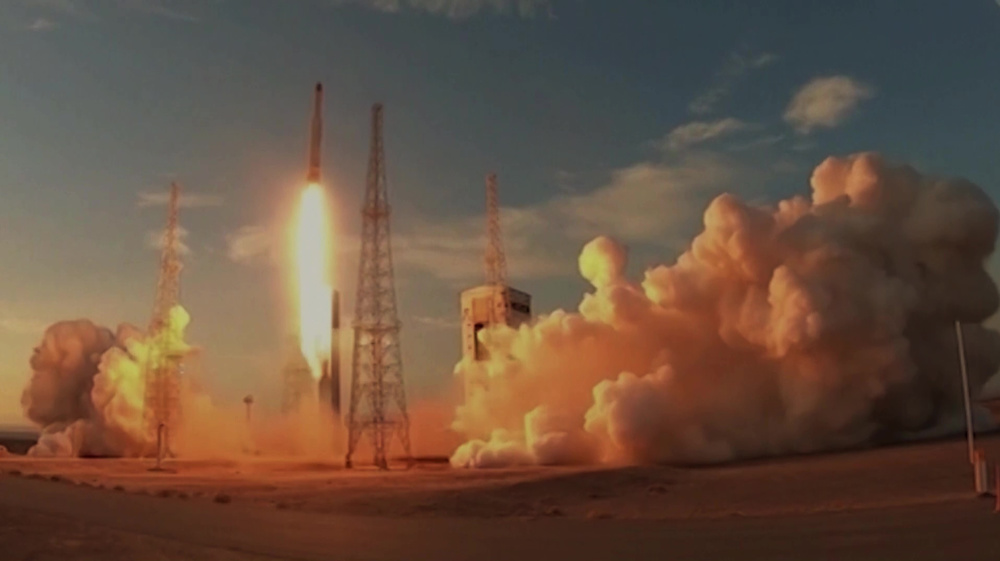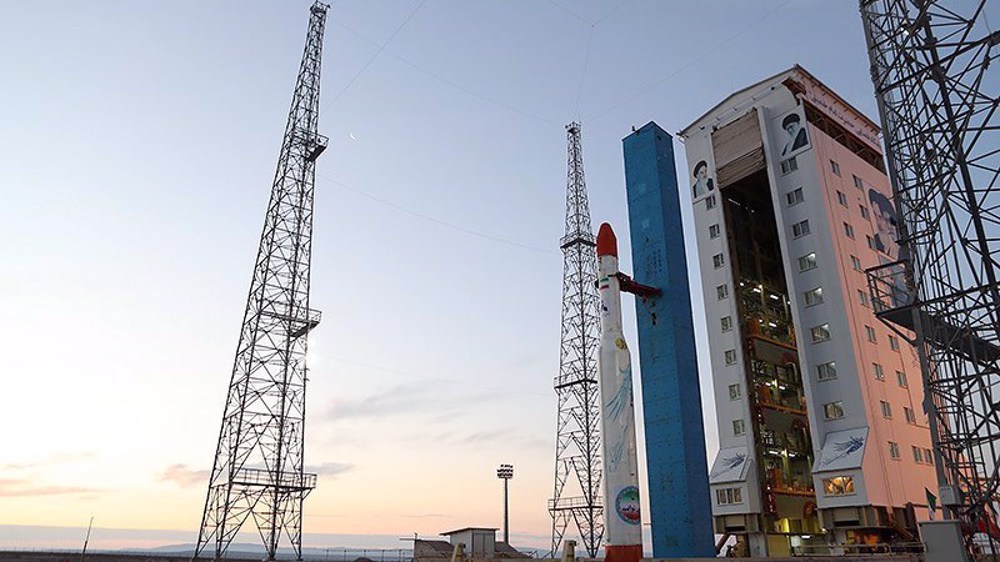Iran plans two more research launches for indigenous satellite carrier rocket Zoljanah
A spokesman for Iran's defense ministry says the Islamic Republic plans to carry out two more launches of its domestically-developed hybrid-propellant satellite carrier rocket called Zoljanah.
Ahmad Hosseini told Iran’s official news agency IRNA on Wednesday that three research-oriented launches had been planned for the Zoljanah satellite carrier.
While one has already taken place, two other launches are in the offing, he said.
“Zoljanah is a three-phase carrier, which runs on hybrid fuel and the performance of different stages is examined and evaluated during each research launch," the official explained.
Following the incorporation of required technology and successful operation, the Zoljanah satellite carrier will be capable of putting "payloads weighing up to 220 kilograms into the orbit at an altitude of 500 kilometers,” Hosseini stressed.
Iran's defense ministry launched the Zoljanah satellite carrier into space for the first time in February 2021, which was broadcast live on state TV.
Zoljanah is named after the horse of Imam Hussein, the grandson of Prophet Muhammad. The satellite carrier is 25.5 meters in length and weighs about 52 tons. It utilizes a 1.5-meter diameter solid fuel engine with 74 tons of thrust.
Earlier this year, the commander of the aerospace division of Iran’s Islamic Revolution Guards Corps (IRGC) said the country has mastered the technology of satellite carriers and tested its first such carrier using solid fuel.
“From now on, Iran will be able to launch a great number of satellites using low-cost engines," Brigadier General Amir-Ali Hajizadeh told a gathering of religious scholars in the Iranian city of Qom on January 13.
Elaborating on the test on an Iranian satellite carrier engine operating on solid fuel, Hajizadeh said the test was "successfully carried out for the first time” in the country.
“During the past two years, all Iranian satellite carriers, which were tested, operated on liquid fuel. But in this test, we succeeded to use the solid-fuel engine with a 66-tonne thrust,” the Iranian commander said.
In late December 2020, Iran’s defense ministry announced that it had successfully launched a domestically-built satellite carrier rocket named Simorgh (Phoenix), sending three research devices into space.
“In this space research mission, for the first time, three research devices were launched simultaneously at an altitude of 470 kilometers and a speed of 7,350 meters per second,” the ministry spokesman, Ahmad Hosseini, said at the time.

‘Guardians of Revolution’: IRGC warns enemies it is at ‘peak of all-out readiness’

‘Deterrent and defensive’: Armed Forces say IRGC vanquishes any enemy at any level

Iranian Armed Forces achieve ‘most sophisticated’ defense technology: Military official
VIDEO | Gaza’s dire conditions hit unprecedented levels
VIDEO | Press TV's news headlines
VIDEO | Pakistan’s business and cultural front unites for Gaza: Nationwide shutdown, boycott announced
US jets carry out more aggression against Yemen
Syrian militants enslaving Alawite women in Idlib governorate: Report
VIDEO | US pro-Palestinian campus protest
VIDEO | Palestinian civil defense rejects Israel’s probe and exposes the crime
India downgrades ties with Pakistan after deadly Kashmir attack












 This makes it easy to access the Press TV website
This makes it easy to access the Press TV website